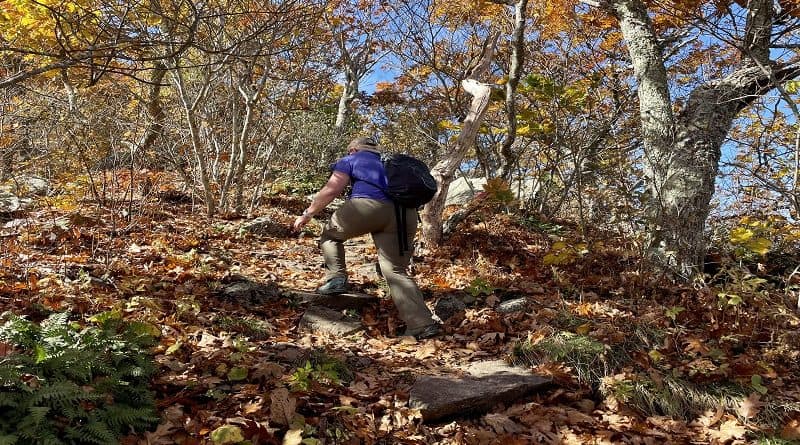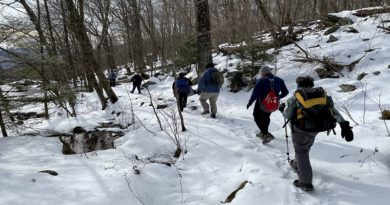How Should I Prepare for Hiking Uphill?
Hiking uphill can be hard. It makes you sweaty, your heart pounds and it’s easy to become completely out of breath. Quickly, too.
However, if you want to hike to big summits or secluded vistas, it’s kind of a necessary skill. Depending on where you live, you may or may not walk uphill now.
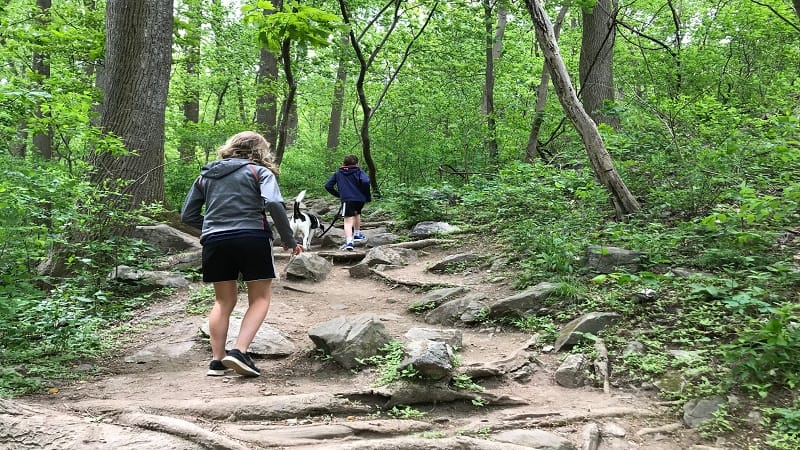
Fortunately, there are ways to prepare for hiking uphill that can make the entire climb much easier on your body, your heart and your lungs.
Even better, these hiking tips and techniques can help you get better at hiking uphill no matter your current skill level or stamina.
What are the Benefits of Hiking Uphill?
Aside from helping you to reach some seriously awesome views and vistas, hiking uphill has numerous benefits for both your body and your mind.
Hiking uphill or walking up an incline can help you burn more calories and boost your metabolism. It also helps your brain release mood-boosting endorphins.
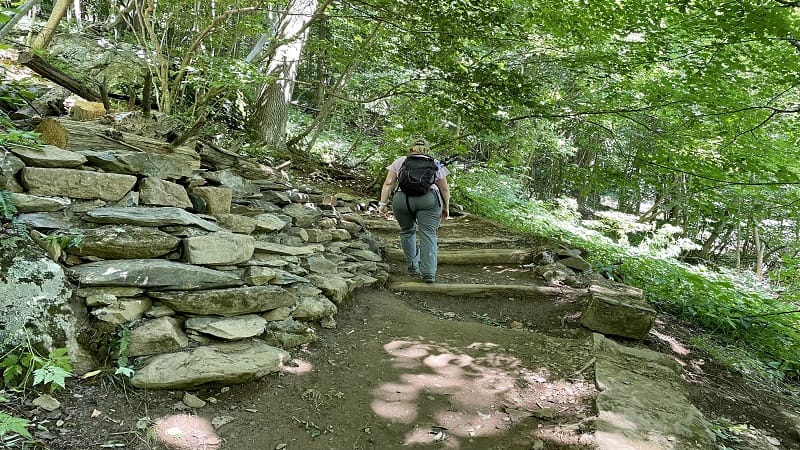
The muscles in your calves, hamstrings, and glutes are all activated when you walk uphill. You’ll tone your calves, thighs, and butt when hiking up a hill.
Hiking uphill is also great for cardiovascular health. When you hike uphill, your heart has to work harder. Over time, this strengthens your heart.
If improving cardio health is important to you, this is a great way to go. Your heart will gain stamina and strength, just like any other muscle.
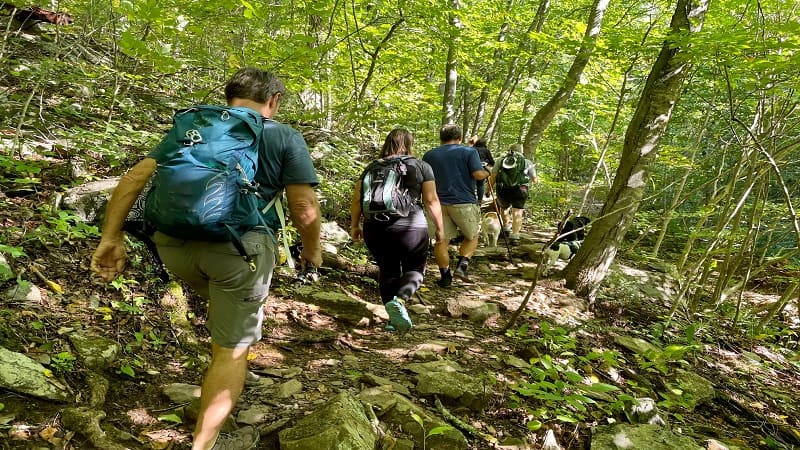
Last but not least, uphill hiking is a great way to keep yourself in a fat-burning workout stage. If hiking for weight loss is your plan, try a hike with incline.
What’s the Best Way to Hike Uphill?
When you first start hiking uphill, one of the first things you’ll notice is challenging it can be. You’ll probably need a ton of breaks, and that’s totally fine.
Before any kind of hike, make sure your legs are warmed up. You can warm up your leg muscles with light hiking and hiking stretches.
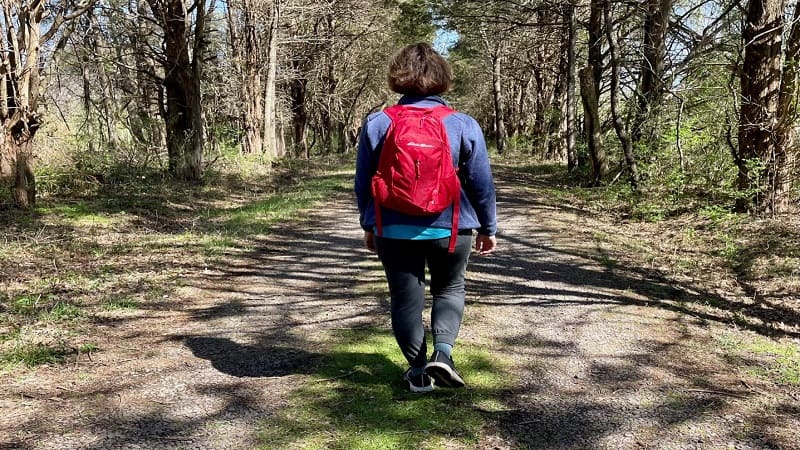
Once you start hiking uphill, take shorter steps. Shorter steps while hiking up an incline make it easier to lift your body up, like going up tiny stairs.
Shorter steps will cause you to go slower, but you can always increase your pace. Monitor your exertion levels as you find your best pace.
The extra work on your body will of course raise your heart rate and exertion levels, but you should still be able to speak full sentences, not gasp for air.
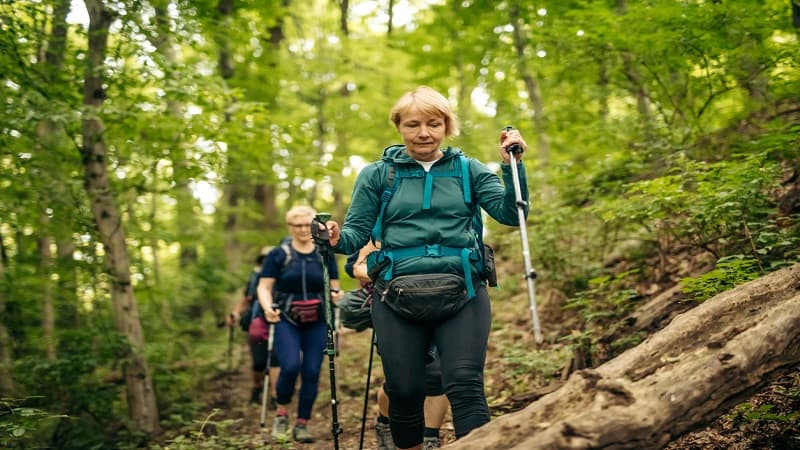
Be prepared to take breaks, experiment with different stride lengths, and practice. Trekking poles help and will be great for going back down, too.
In winter, toss a pair of microspikes for hiking into your daypack. They will help keep you from slipping on the uphill and the downhill.
How Can I Get Better at Hiking Uphill?
The best way to get better and faster at hiking on inclines is to practice, practice, and then get more practice. This repetition will build stamina and strength.
With increased stamina, you can increase your speed. As you gain strength and stamina you’ll be able to sustain greater speeds for longer periods of time.
To get faster, experiment with different stride lengths – just be sure you’re not raising your knees too high. You can also just try walking faster uphill.

The gym is a great place for cross training for hiking. You can walk or run on a treadmill on an incline or try out the stair stepper to improve stamina.
Other exercises for improving your uphill hiking speed include lunges and squats. Additionally, you can try walking or running in sand.
For enhanced speed on the trail, you can also try lightening your pack. Or, move your pack’s weight from your hips to your shoulders for increased speed.
How Should I Breathe When I Hike Uphill?
It’s normal to get really winded when you first start hiking uphill. Luckily, you can learn how to hike uphill without getting as winded over time.
One great way to prevent getting winded while uphill hiking is called pressure breathing. This is an easy technique that’s useful for all skill levels.

When you hike uphill, your large leg and glute muscles need a lot more blood and a lot more oxygen – that’s why you get so out of breath.
Pressure breathing can help you bring in more oxygen in a single breath, giving you more stamina and helping you make it up the hill.
You do this by taking a big inhale and exhaling quickly and forcefully with each step, all while hiking slowly.
Pressure breathing is a unique technique used by mountaineers hiking and climbing at high altitudes to get more oxygen. It can help you, too.
What Kind of Stretches Should I Do Before Hiking Uphill?
Stretching is essential to help prepare your body for uphill hikes. It can also help prevent you from getting so winded.
Your stretches and warm-ups for uphill hiking should focus on the major muscle groups you’ll be using: your thighs, calves, and glutes.
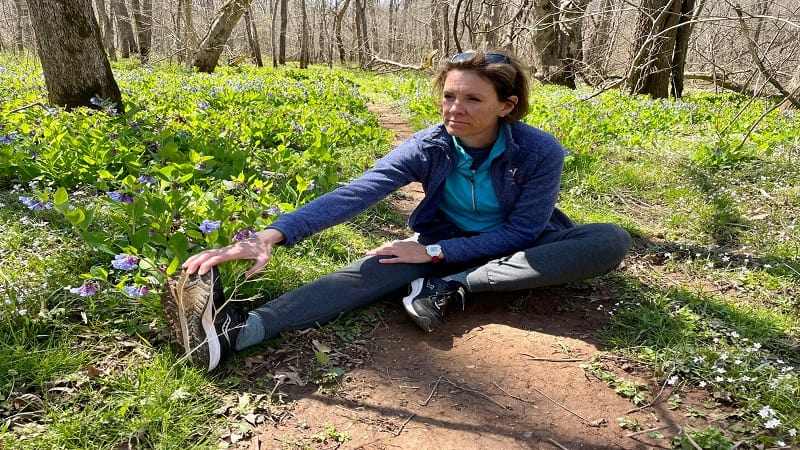
Hamstring stretches help prepare your hamstrings for uphill hiking. This stretch can be done seated or while standing and resting your leg on a log.
Quadriceps stretches help prepare the muscles in the front of your thigh and can be done standing while you hold your foot with your hand.
A few more great hiking stretches to prepare your legs and glutes include lunges, toe touches, and the butterfly stretch.
What Are Good Post-Hike Stretches?
After your hike, focus on stretching out the muscles that you used the most. For uphill hikes, pay special attention to the legs and glutes.
Stretches like the seated butterfly stretch, glute stretch, seated hamstring stretch, and lunges can all help loosen up tight muscles from steep hiking.
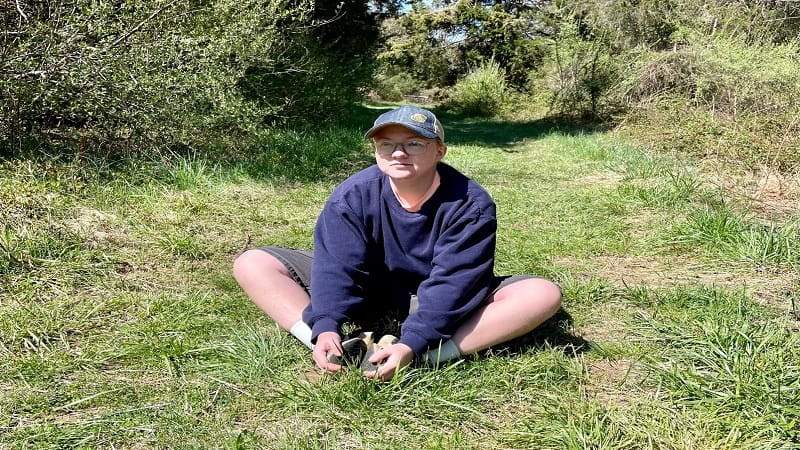
You can do the same stretches you did pre-hike, but try to incorporate some new ones, too. The key with post-hike stretches is loosening up tight muscles.
Stretching is so important to do both before and after your hike. It’s a simple and quick way to help your muscles recover and prevent injury.
After a hike, don’t focus on your legs. Stretch out your upper body, including arms, shoulders, core, and neck. Every muscle group is engaged while hiking.
What Exercises Can I Do to Improve My Uphill Hiking?
It’s not always practical to hit the trails every single day to keep your muscles in tip-top shape for hiking. Luckily, you can train at home.
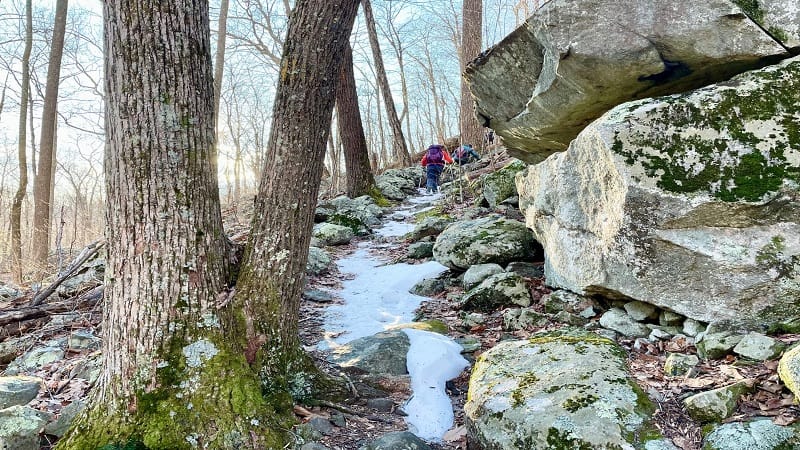
Here are some exercises you can do off-trail for training to hike uphill.
Walking or Running
Walking or running, especially on an incline, is a great way to train for hiking. If you have access to a treadmill, you can set it on an incline.
Lunges
Lunges work most major muscles in your legs and glutes. This is a great exercise that can be done anywhere to prepare for hiking uphill.
Stairs (Or Stair Stepper)

Stairs are a great way to keep your legs in great shape for hiking uphill. If you don’t have stairs, try local stadiums, the gym, or the mall.
Step-Ups and Calf Raises
Step-ups are another great way to work your leg muscles. Calf raises are a great strength training exercise for your calves, too.
You can do step-ups or calf raises on almost any step – even curbs around the neighborhood are a good tool for this.
Cycling

If you love to ride your bike, you’ll love to know that cycling is a great way to keep your legs in shape for hiking uphill.
How Should I Use Trekking Poles for Uphill Hiking?
Trekking poles are a great tool to use when hiking uphill. They provide balance and stability and are great for going back downhill, too.
Using trekking poles while hiking uphill is very intuitive. Use them in advance of each stride to provide balance and a little extra oomph from your arms.
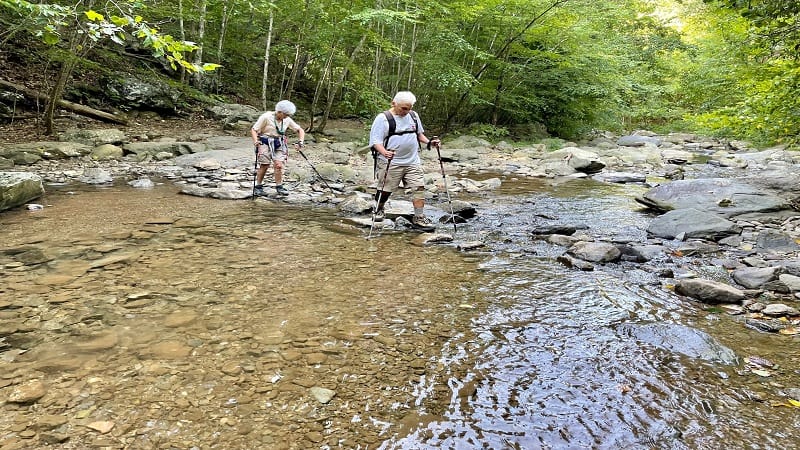
Using trekking poles is a great way to give your legs a little bit of assistance on hard uphill trails. They also help keep your balance on steep sections.
However, it’s important to remember not to solely rely on your poles to get you uphill. If your legs are too exhausted, give yourself a break.
Poles are also incredibly helpful (and also recommended) when hiking downhill. For downhill hiking, you may need to extend them a little bit.
When hiking downhill, trekking poles help you keep your balance and find your footing, and they can help protect your knees as well.
Wrap-Up Notes
There’s literally no way around it: if you’re an avid hiker (or want to be), you’re going to have to hike uphill at some point. Maybe a lot, too.

Depending on where you live or the sights you want to see, hiking uphill to big views might be unavoidable. The good news is: it doesn’t have to be too hard.
The more you do it, the easier it will become. In the beginning, remembering how to stride, pace yourself, and breathe is so helpful.
If you don’t warm up first, breathe properly, or pace yourself, uphill hiking will exhaust you really quickly.
However, with the right techniques, pacing, and breathing, you’ll be able to reach the summit much easier.
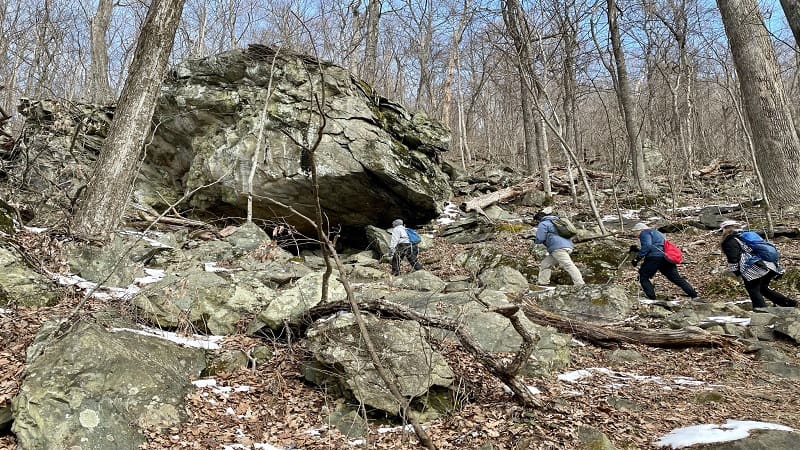
You’ll see great views, your body and mind will appreciate the workout, and your leg muscles will start to look awesome over time. It’s a win-win-win!
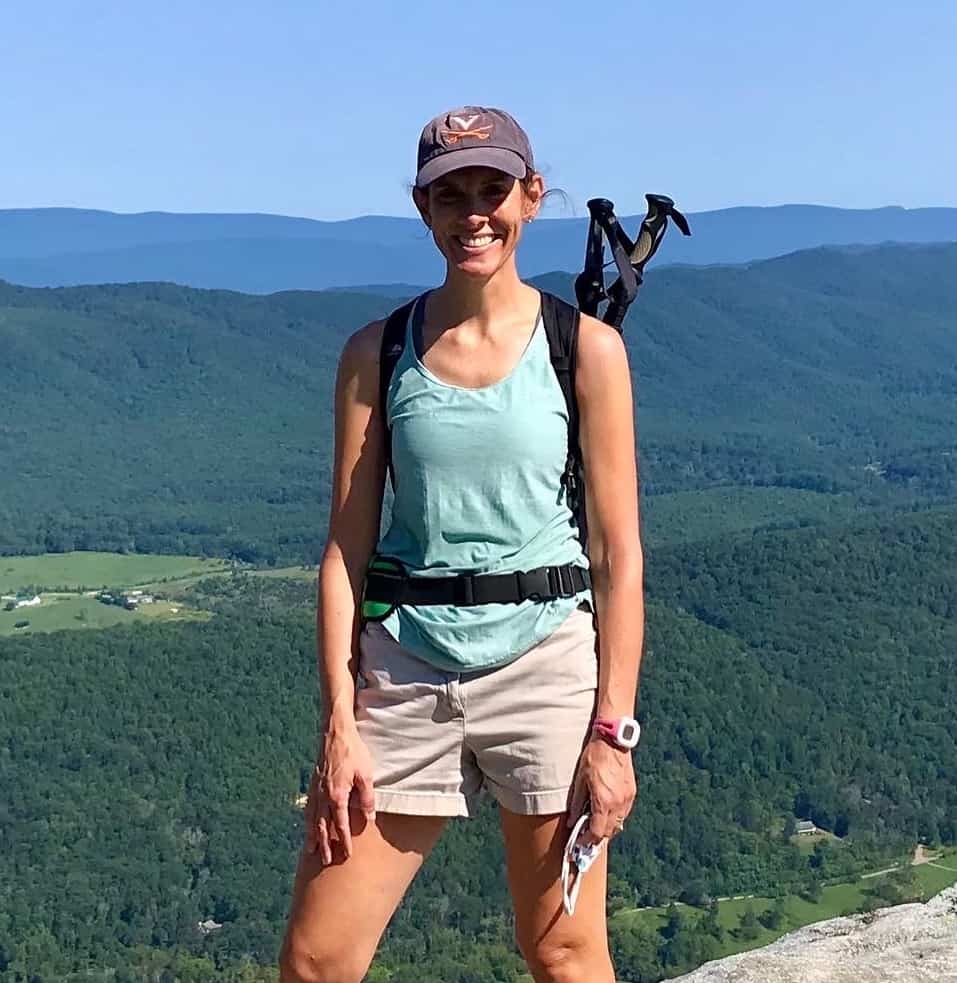
Erin Gifford has completed more than 300 hikes in Virginia. She is also the author of three hiking guidebooks from Falcon Guides. Need help finding a hike? Check out the Trail Finder feature or send Erin an email at [email protected].

